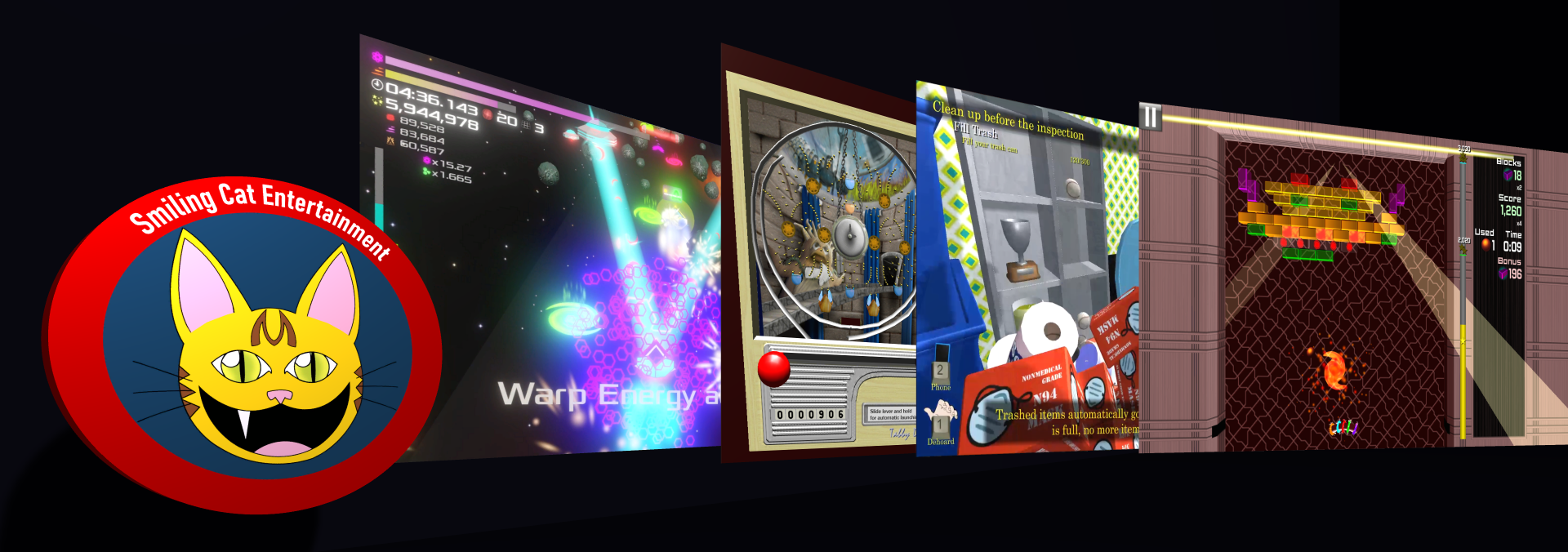Welcome to Friday Fun, where I talk about whatever is on my mind with game development in hopes that someone finds it interesting.
Release Doldrums
TBH I struggled to come up with topics for this week’s post. The work that has happened this week has been less of the interesting pioneering development efforts and more of the taking-care-of-business end of preparing a game for release. It has been lots of playtesting and preparing marketing materials, and a minimal amount of bug fixing. I call it the “Release Doldrums”, and I’m sure it will abate by next Thursday at the latest when Prepare For Warp leaves Early Access as a fully released game. Hopefully I will wrap things up sooner.
I did achieve one victory – I was unhappy with how the game was communicating the effect of the “Galactic Deflation” Legacy Upgrade. It’s an upgrade that has a very mathy effect involving exponentials, and it doesn’t do much to the cost of low-level upgrades, but has an increasing effect on higher level upgrades. The effect was being reported in “basis points” of effect, which didn’t really tell anyone (even me) anything besides that it was a higher number and presumably better.
In talking to a couple of friends who play the game, I realized that they were communicating their progress to me in terms of what the currently available level of Ship Upgrade cost. (e.g. “I’m up to where upgrades cost 500 million Argen.”) So, using a couple of player stats as input, I managed to coax the game into reporting what the actual cost effect would be on the highest level of item that was ever available to the player (actually a guestimate of the highest level of item based on the highest number of ship upgrades purchased, but it will be close enough).
So now I am much happier with how the effect of this upgrade is being reported.
Steam Release Next Thursday
As this is the last Friday Fun post before the Prepare For Warp release date, next time I post here Prepare For Warp will be a fully released game on Steam.
Nearly 12 years ago was my first attempt to release something on Steam. This was before Steam Greenlight or the more modern days now where you can just pony up $100 to put something on Steam. The game (Thrust or Bust) was rejected, and over time I came to understand many of the reasons why. The game is a bit of a flying turd. It is a very ambitious for a first project, and though it is whole it is definitely also a freshman effort in nearly every aspect. I play it every now and then to remind myself how much I have grown as a game developer over the years. (Fun fact: I received the rejection from Valve for Thrust or Bust during my wedding reception.)
So it is definitely with some self-satisfaction that I promote Prepare For Warp to a Full Release on Steam, as it will be the realization of a life goal created a long time ago.
Homage to Influencing Games
It should come as no surprise to anyone who knows me or has played my games for any length of time that I am a huge fan of classic (1975-2000) video games. Breaking Block, aside from iterating on the genre defined by two of what I consider the all-time most-influential games (Breakout and Arkanoid), also contains references to many other classic games.
Prepare For Warp is designed in the same vein as many of these classic games, but with more modern meta-game elements like incremental upgrades.
I wanted to take a moment to call out some of the games, classic and modern, that most influenced the development of Prepare For Warp. I will also discuss what I did to improve on the experiences those games provided to me.
Astrosmash/Astroblast (1981, John Sohl/Mattel/Mattel)
My experience with this game was with the Atari 2600 version. I always thought it was a bit too difficult, and I think my best progress was level 4. I liked the general gameplay, though. I always thought from an early age that if the screen were taller, a bit more reaction time could be provided to the player without sacrificing the pace of gameplay. This thought forms the core behind the choice for Prepare For Warp’s perspective. Instead of making the screen taller, the play field is tilted inward toward the screen: close to, but not fully, a horizon view. So obstacles still appear at the top of the screen, but the depth of the field allows for the perception of the obstacles traveling greater distances, giving the perception of greater speed.
Gyruss (1983, Yoshiki Okamoto et. al./Konami)
I love the unique annular perspective from which this game is played, which is provided by few other games (Tempest comes to mind). But the element that I borrowed from this game was actually the laser gate obstacle mechanic: Two emitter ends with an energy beam suspended between, threatening to restrict movement significantly. Either ends or beam are harmful, but the whole system has a weakness that only one of the ends need be destroyed.
Spy Hunter (1983, George Gomez et. al./Bally Midway)
This game was probably my biggest all-time allowance-eater. The branching paths of the game resulting in differing upgrade progression was brilliant. Also brilliant was in how those weapons were delivered: The background scenery colors would change, an ally in the form of a tractor trailer appeared, aligning speed and steering with the player car, allowing the player to accelerate into the opened back of the tractor trailer for a few moments of respite to wipe sweaty hands, take delivery of a new weapon, and get deposited on the shoulder of the road.
This is the inspiration for the sector transition and ally refit sequence in Prepare For Warp. The sector transitions are set up within a level to give mileposts to the points at which the level transitions from the overcrowded initial sector 1, to the more spacious, generous, and empowering sector 2, to the increasing punishment of sectors 3 and beyond. The color scheme changes, and an ally ship appears with a little 8-bit musical fanfare, falls into position ahead of the player, partially shields the player from obstacles, and drops helpful items before warping away.
Learn to Fly series (2009/2011/2016, Light Bringer Games)
This is a brilliantly playful series from back in the Flash/Kongregate days, where you play the role of a penguin trying to figure out how to take flight. Each game in the series takes penguin flying a little bit further, with spaceflight featuring heavily in the latest installment.
The first two games in this series were the inspiration for the main try/fail/upgrade/try/succeed game loop in the 2013 version of Prepare For Warp. I really liked how failure was an expected outcome, but even that failure allowed steady progress toward the eventual goal.
Cookie Clicker (2013, Orteil) and Clicker Heroes (2014, Playsaurus)
It might seem strange to cite idle games as an inspiration when Prepare For Warp is anything but an idle game. What these game lent to Prepare For Warp were their incremental game concepts involving exponential math.
While Prepare For Warp’s numbers do not leave the range afforded by 64-bit integers, the game does make liberal use of those upper 32 bits to utilize numbers in the trillions and quadrillions to help convey a sense of vastness within the game. The math that allows non-linear progression to those lofty numbers is rooted in study of the formulas used by these games and their application.
Also by extension, their ascension mechanic is largely the inspiration behind the Retirement mechanic in Prepare For Warp.
Those are the main gameplay influences. There are other lesser influences as well, such as the Lego adventure games overall, because they always provide those silly unlockable extras that make people laugh. They were the inspiration behind the Prepare For Warp unlockable extras.
Conclusion
I hope that today I’ve given you some insight on the many design inspirations behind Prepare For Warp. As in any artistic field, we all take inspiration from those that came before us, and only our own unique thought processes can combine those inspirations to create something new and fresh. In turn, we hope to inspire those that come after us.
I’m off to finish final trailers for Prepare For Warp. Next time I post, I will have graduated from Early Access Steam developer to full-fledged published Steam developer!

